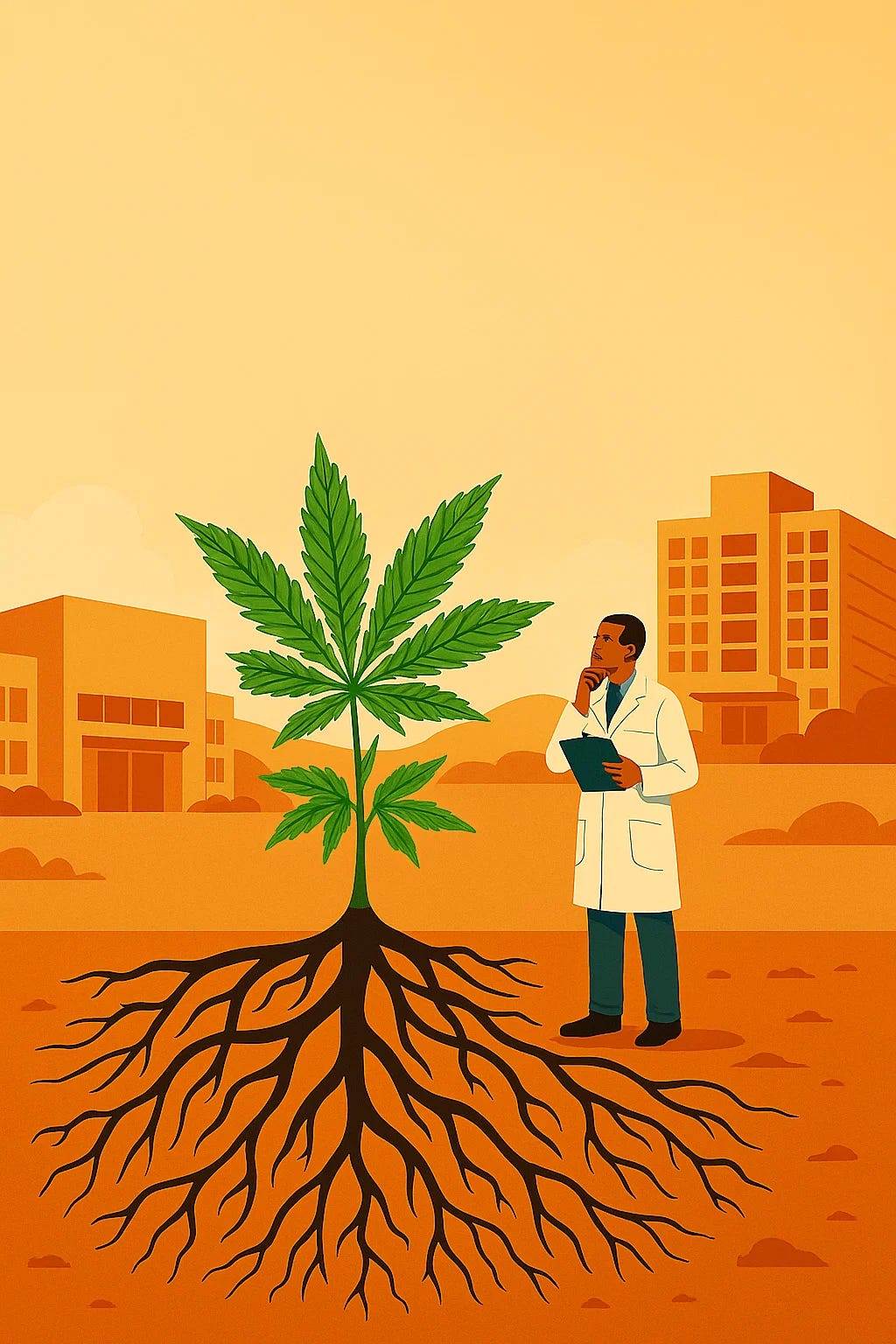What begins with cannabis can grow into something far larger—an R&D ecosystem that roots Scotland in the future of medicine
How Scotland Can Lead the Next Wave of Medical Innovation—From Cannabis to a Global Hub for Botanical R&D
Scotland’s Untapped Opportunity in Medicinal Plant Infrastructure
Scotland is uniquely positioned to become a world leader in the research, licensing, and application of medicinal plants. It has the land. It has the universities. It has a growing cannabis-aware population. But most importantly—it has the opportunity to build an infrastructure-first model that other countries are still years away from developing.
Through my work in cannabis licensing and policy, I’ve come to believe that medical cannabis is not the endpoint. It’s the gateway. A proving ground. What starts with a single facility in the corridor between Edinburgh and Glasgow could evolve into the most advanced medicinal plant R&D ecosystem in Europe—possibly the world.
From Cannabis to Comprehensive Botanical Medicine
Let’s begin with cannabis. The UK’s medical cannabis market generated over £205 million in sales in 2024, yet 95% of prescriptions were fulfilled by foreign producers. That means patients, doctors, and health systems rely on imported products with inconsistent availability, no domestic security, and zero downstream value for the Scottish economy.
Now consider what happens when we build a facility in Scotland that can:
Store and handle controlled substances legally
Host preclinical trials with academic partners
Model NHS savings through cannabis substitution
Train professionals in advanced cultivation and formulation
Eventually expand into other licensed plant compounds
This isn’t just about cannabis. The infrastructure can be adapted for other high-value botanical medicines with real scientific backing.
Other Plants With Proven Pharmaceutical Value
Beyond cannabis, here are just a few plants already integrated into global pharmacology:
Opium Poppy (Papaver somniferum): Source of morphine and codeine—critical for pain management
Pacific Yew (Taxus brevifolia): Yields paclitaxel, a chemotherapy agent
Snowdrop & Daffodil: Contain galantamine, used in Alzheimer’s treatment
Turmeric (Curcuma longa): Anti-inflammatory and antioxidant properties
Echinacea: Used for immune support and respiratory health
Evening Primrose: Treats skin conditions and hormonal imbalances
Ginkgo Biloba: Studied for cognitive function and memory enhancement
Flax: High in omega-3s, supports cardiovascular health
Most of these plants are cultivated overseas—often in India, China, or Germany—where specialized zones for herbal pharmaceutical research are well-established. Scotland could offer a European alternative, but only if the infrastructure exists.
The Economic and Scientific Case for Domestic Leadership
Globally, the herbal and botanical medicine market is projected to exceed $100 billion annually. The market is fragmented but growing fast, driven by a combination of:
Consumer distrust in big pharma
Increased interest in functional, natural treatments
Data validating centuries-old remedies
Climate urgency forcing us to localize supply chains
What’s missing is a domestic system that integrates cultivation, research, licensing, and production in a controlled, transparent, and scientifically rigorous way.
A facility that begins with cannabis, but evolves to house dozens of therapeutic plant strains under one roof, with collaboration from Scotland’s university network and clinical research community, could make the country a permanent fixture in the global medicinal plant economy.
Why Infrastructure—Not Advocacy—Will Shift the Map
Policy moves slowly. Advocacy is necessary, but it rarely funds itself. What we need is an economic engine that doesn’t depend on opinion polls or elections.
By aligning retail with research—using apparel sales to transparently fund licenses, facilities, and university partnerships—Business Casual creates a new funding loop. Every item sold finances a tangible step forward: a controlled substance license, a facility module, a grant application. With time, this can scale into manufacturing, distribution, and even IP licensing for formulations derived from Scotland-based R&D.
This isn’t theory—it’s already underway. We’ve begun applying for licenses. We’re in active conversations with researchers. We’re modeling NHS savings through cannabis use with the University of Edinburgh’s School of Informatics. We’re just getting started.
Looking Forward: A Scottish Identity Rooted in Scientific Progress
This isn’t about branding Scotland as an “alternative” nation. It’s about giving it a sovereign role in the next generation of evidence-based medicine. When we talk about putting Scotland on the map, we’re talking about real capital—intellectual, agricultural, scientific, and reputational—flowing into a system that works.
Imagine a Scotland known not just for whisky or wind, but for pioneering a center where AI, traditional medicine, and pharmaceutical botany intersect. That’s what Business Casual is building toward: quietly, precisely, and with purpose.
I believe this is possible because we are not waiting to be told it's allowed.
We are building the infrastructure to prove that it's already overdue.
—
Thank you for being here. Founder Drop 001 supports this vision—beginning with the facility that makes everything else possible.




